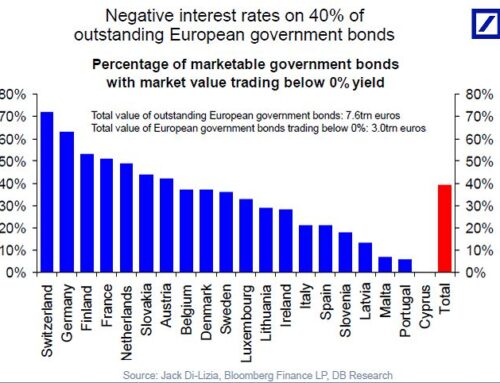Radhakrishna Damani, a well-known investor in India considering taking control of India cement, setting the stage of a hostile takeover.
Why Am I Making it more dramatic? Because I know the history of Hostile takeovers in India. I wrote and talked about one of them on this blog and youtube channel.
So let’s divide it into three-part.
-
Hostile takeover History
-
India cement
-
Radhakrishna Damani
Hostile takeover history
A hostile takeover is the acquisition of one company (called the target company) by another (called the acquirer) that is accomplished by going directly to the company’s shareholders or fighting to replace management to get the acquisition approved. A hostile takeover can be achieved through a tender offer or a proxy fight. For example, when a company, an investor, or a group of investors makes a tender offer to purchase the shares of another company at a premium above the current market value, the board of directors might reject the offer. The acquiring company can take that offer directly to the shareholders, who may accept it if it is at a sufficient premium to market value or if they are unhappy with current management. The stock sale only occurs if an adequate number of stockholders, usually a majority, agree to accept the offer.
Hostile takeovers are not new for the Global Capital market. In the largest hostile takeover history, Vodafone acquired German firm Mannesmann AG for $202.8 billion in 1999. Kohlberg Kravis and Roberts, KKR, well known for their leverage buyout, Took control of RJR Nabisco. In another transaction, When AOL took over Time Warner, a much larger firm, it was hailed the ‘deal of the millennium’ at the time. However, the newly crowned largest media company in the world saw its value destroyed when the dot-com bubble burst. They subsequently split later on, with the new company losing over $200 billion within two years, more than the $164 billion value of the initial deal.
In September 2009, Irene Rosenfeld, CEO of Kraft Foods Inc., publicly announced her intentions to acquire Britain’s top confectionery company, Cadbury PLC. Kraft offered $16.3 billion for the maker of Dairy Milk chocolate, a deal rejected by Sir Roger Carr, Cadbury’s chairman. Here, even the government took Cadbury’s side, and the Corporate secretory made a statement against Kraft food as this was taking place before the merger of Kraft foods and Heinze.
In India, this was even more interesting. In 1983 London-based NRI Swaraj Paul sought to control the management of two Indian companies, Escorts Limited and DCM (Delhi Cloth Mills) Limited, by picking up their shares from the stock market. While he was ultimately unsuccessful, Paul’s hostile threat sent shockwaves through the Indian business world.
In 1998, India Cements Limited (“ICL”), in its hostile bid for Raasi Cements Limited (“RCL”), made an open offer for RCL shares at Rs 300 per share at the time when the share price on the Stock Exchange, Mumbai (“BSE”) was around Rs. 100. In this case, investors felt cheated as the promoters sold out their stake to the acquirer leaving little room for them to tender their stake to the acquirer during the open offer. However, ICL also bought out the FIs in the available request, thereby increasing their holding in RCL to 85%. For a long time, it was the only successful attempt at a hostile takeover in India.
In October 2000, Abhishek Dalmia made an open offer to acquire 45% of the share capital in Gesco Corporation at Rs 23 per share. This transaction entered into a drama of hostile takeover until the promoters of Gesco corporation and the Dalmia group announced to have reached an amicable settlement in the battle for Gesco, with the former buying out Dalmias’ 10.5% stake at Rs 54 per share for a total consideration of Rs 16 crore. The Gesco Corporation takeover drama showed that a bidder with admittedly poor financial resources could drive the price up of shares only to exit later with a massive profit via a negotiated deal.
In 2012, Essel Group’s Subhash Chandra sought to control Iragavarapu Venkata Reddy Construction Limited (IVRCL), an infrastructure company. The promoters in the target company had only an 11.2 percent stake in IVRCL. After acquiring a 10.7 percent stake in IVRCl, Subhash Chandra’s Essel Group made a u-turn and decided to exit its shareholdings in the target company.
Last year in 2019, L&T signed a deal with the promoter of coffee day enterprise V. G Siddartha for his 20.4 percent stake in leading services firm Mindtree at ₹981 per share for about ₹3,300 crores. Makes the second success story of hostile. Though V. G. Siddartha commits suicide, it looks like Mindtree makes his life a little longer as it gives him the liquidity he requires.
The government’s policies to curb the concentration of economic power through the introduction of the Industrial Development and Regulation Act, 1951, MRTP Act, FERA Act, etc., have made hostile takeovers a problematic proposition. As a result, since its economic liberalization in 1991, India has witnessed only a handful of hostile takeover attempts.
- A hostile takeover is when an acquiring company attempts to take over a target company against the wishes of the target company’s management.
- An acquiring company can achieve a hostile takeover by going directly to the target company’s shareholders or fighting to replace its management.
- A tender offer and a proxy fight are two methods of achieving a hostile takeover.
- Target companies can use certain defenses, such as the poison pill or a golden parachute, to ward off hostile takeovers.
In the next part, I am going to write about Radhakrishna Damani.




